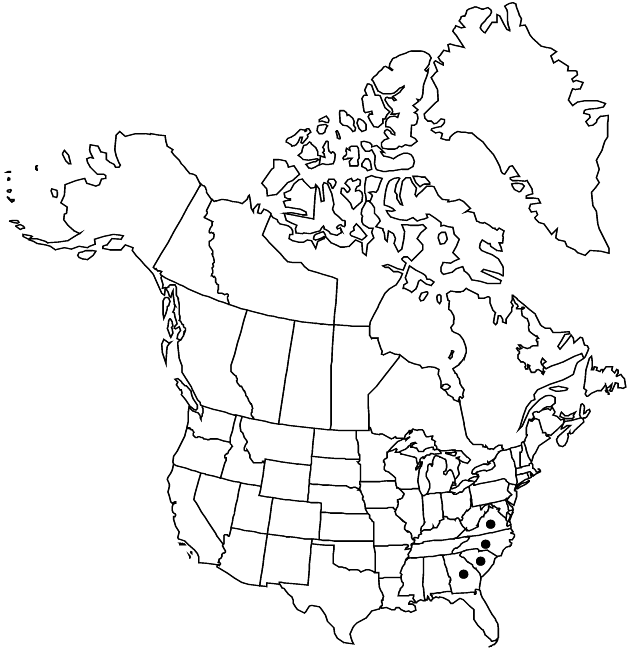Carphephorus bellidifolius
Fl. N. Amer. 2: 66. 1841.
Common names: Sandy-woods chaffhead
Endemic
Basionym: Liatris bellidifolia Michaux Fl. Bor.-Amer. 2: 93. 1803
Plants 20–60 cm. Stems glabrous or glabrate (except peduncles), eglandular. Leaves: basal and proximal cauline usually oblanceolate, sometimes nearly spatulate, mostly 4–20 cm; cauline gradually reduced, faces gland-dotted. Heads in open, loose, usually corymbiform, sometimes paniculiform, arrays. Peduncles minutely puberulent (viscid, hairs not glandular). Involucres 7–12(–15) mm. Phyllaries 15–40+ in 3–5+ series, broadly elliptic to elliptic-obovate, glabrous, eglandular (except margins ciliate), apices rounded. Receptacles paleate (at least peripherally). Corollas eglandular, lobes 1.5–2.5 mm. Cypselae minutely sessile-glandular; pappus bristles in 1(–2) series. 2n = 20.
Phenology: Flowering Jul–Oct.
Habitat: Dunes, sandhills, sandy rises in flatwoods, sandy fields, roadsides, weedy banks, open pine, scrub oak, and turkey oak-pine woods
Elevation: 10–40 m
Distribution

Ga., N.C., S.C., Va.
Discussion
Selected References
None.
Lower Taxa
None.